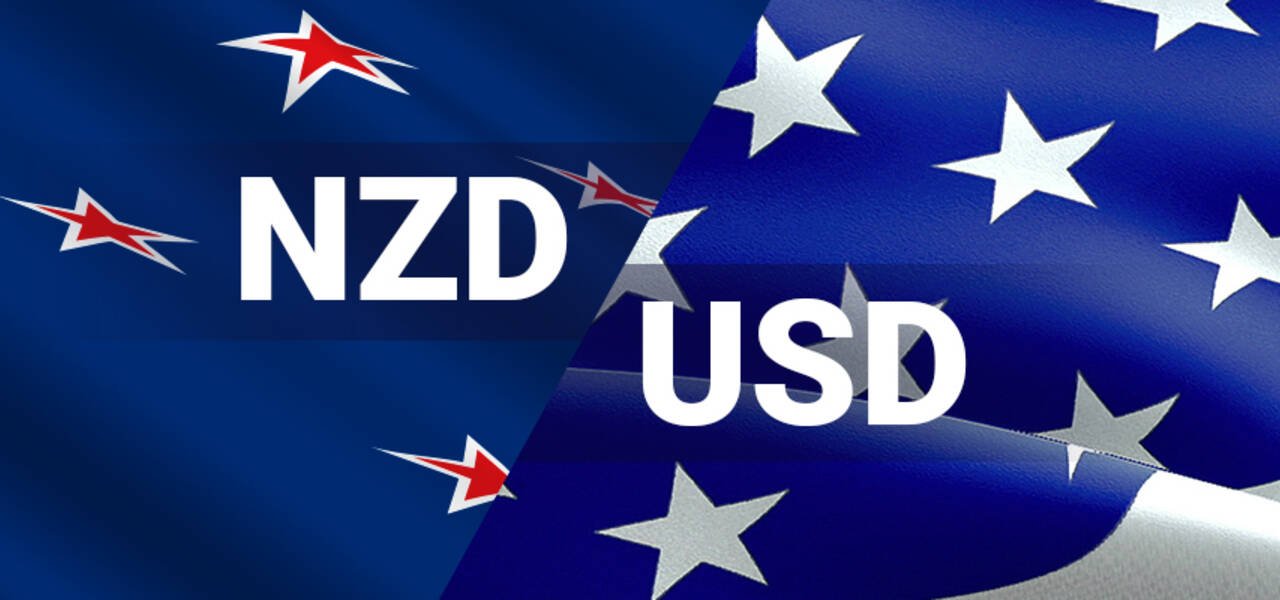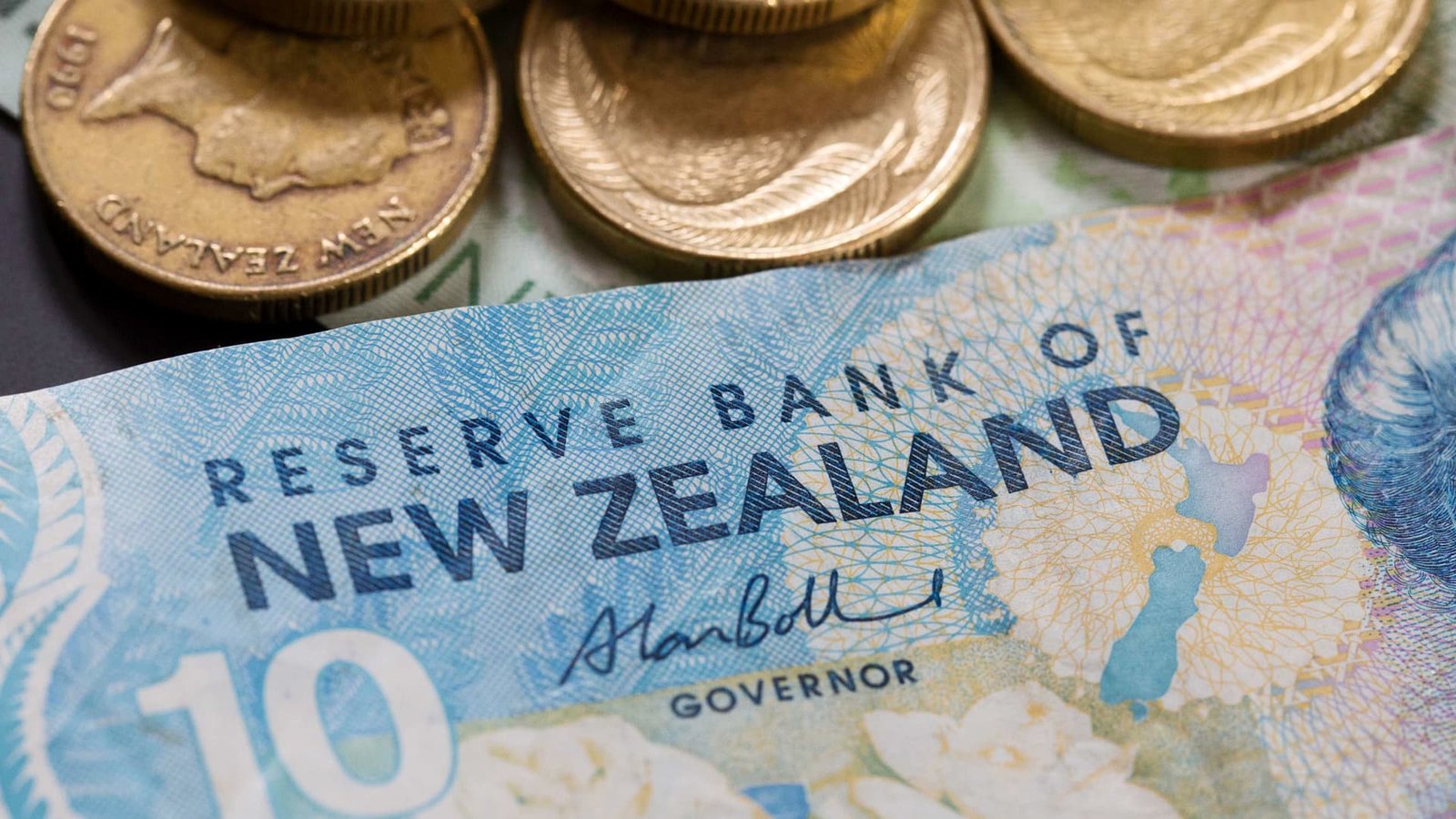NZD/USD Under Selling Pressure Prior to RBNZ Policy Decision as Market Expects Rate Cut
NZD/USD currency pair faced selling pressure on Monday, falling close to 0.5815 as investors became risk-averse prior to the Reserve Bank of New Zealand’s (RBNZ) policy announcement. Market participants expect the RBNZ to reduce its Official Cash Rate (OCR) by 25 basis points to 2.75%, the second consecutive rate cut as economic growth slows. At the same time, the US Dollar firmed up as a result of higher safe-haven demand amid French political tensions, adding to the down pressure on the Kiwi. With ongoing threats of a US govt shutdown and bearish technical indicators, NZD/USD finds it difficult to continue its recent run of gains, ranging around important support levels. KEY LOOKOUTS • Markets expect a 25 bps rate cut to 2.75%, which could determine the direction for NZD/USD’s next move. • Soft New Zealand GDP statistics supports bets on dovish RBNZ policy. • Greenback rallies on safe-haven buying following French political instability and US fiscal uncertainty. • NZD/USD is capped near 20-day EMA at 0.5847, with vital support points at 0.5800 and 0.5754. NZD/USD currency pair pulled back from initial gains on Monday, trading at around 0.5815 as investors took a guarded approach following the Reserve Bank of New Zealand’s (RBNZ) policy decision. The anticipation is strong for a 25 basis point rate reduction to 2.75%, sparked by New Zealand’s poor GDP numbers and growing apprehensions of dwindling economic pace. In contrast, the US Dollar rallied following increased safe-haven demand in response to political unrest in France and ongoing threats of a US government shutdown. From a technical perspective, the pair flounders below its 20-day EMA at 0.5847, which points to bearish pressure potentially continuing if it is unable to retake the 0.5800 handle. NZD/USD dropped to the levels of about 0.5815 as speculators grew more cautious before the RBNZ policy announcement. Anticipation of a 25 bps rate reduction and soft NZ economic data pressed down on the Kiwi, and a supportive US Dollar further bolstered the pressure. The pair now finds it difficult to stay above important support levels. • NZD/USD falls to about 0.5815 due to pre-RBNZ policy prudence. • Markets anticipate the RBNZ to lower rates by 25 bps to 2.75% on Wednesday. • Subpar NZ GDP data supports ongoing expectations of monetary easing. • The US Dollar rises on safe-haven demand due to France’s political instability. • Threats of a US government shutdown remain supportive of the Greenback. • NZD/USD is resisted at near the 20-day EMA of 0.5847, indicating bearish bias. • The major downside levels to monitor are 0.5800, 0.5754, and 0.5700 if the selling process accelerates. The NZD/USD currency pair came under fresh pressure on Monday as the investors went cautious before the Reserve Bank of New Zealand’s (RBNZ) policy announcement, which is scheduled later in the week. The market participants expect the central bank to announce a 25 basis point cut in the rate, reducing the Official Cash Rate (OCR) to 2.75%. This step would be the second straight cut as the RBNZ continues to fight dwindling economic momentum. New Zealand’s GDP figures, which indicated a 0.9% dip in the second quarter, have fueled expectations for additional monetary loosening to prop up growth. NZD/USD Daily Chart Price SOURCE: TradingView On the international front, the US Dollar received widespread support as investors flocked to the currency for safety in the wake of political unrest in France and continued fears over a possible US government shutdown. These drivers have increased the Greenback’s popularity, adding further pressure on risk-sensitive currencies such as the New Zealand Dollar. In anticipation of the RBNZ’s decision, the market continues to look to policy signals that have the potential to guide near-term direction for the Kiwi and overall investor sentiment. TECHNICAL ANALYSIS NZD/USD is weakening as it fails to maintain above the 0.5800 level. The pair is immediately tested near the 20-day Exponential Moving Average (EMA) at 0.5847, reflecting ongoing selling pressure. The 14-day Relative Strength Index (RSI) bounced above 40, but a failure to maintain this level might stimulate renewed bearish momentum. If the pair falls below 0.5800, it could set the stage for a drop towards the 0.5754 support area, but a strong break above 0.6000 could turn sentiment in favor of the bulls. FORECAST If the RBNZ surprises markets with a less dovish tone or signals a pause in further rate cuts, NZD/USD could regain upward momentum. A sustained break above the psychological 0.6000 level would likely attract renewed buying interest, paving the way toward the June 19 high of 0.6040 and the September 11 low near 0.6100. Improved risk sentiment or softer US data could further support the Kiwi’s recovery against the Greenback. On the other hand, if the RBNZ reaffirms its dovish stance and hints at further easing, the Kiwi could continue to be under selling pressure. A clean break below 0.5800 could see a plunge to the September 26 low of 0.5754 and possibly the 0.5700 support zone. Excessive US Dollar strength due to global risk aversion or political tensions would further suppress the pair in the near future.












